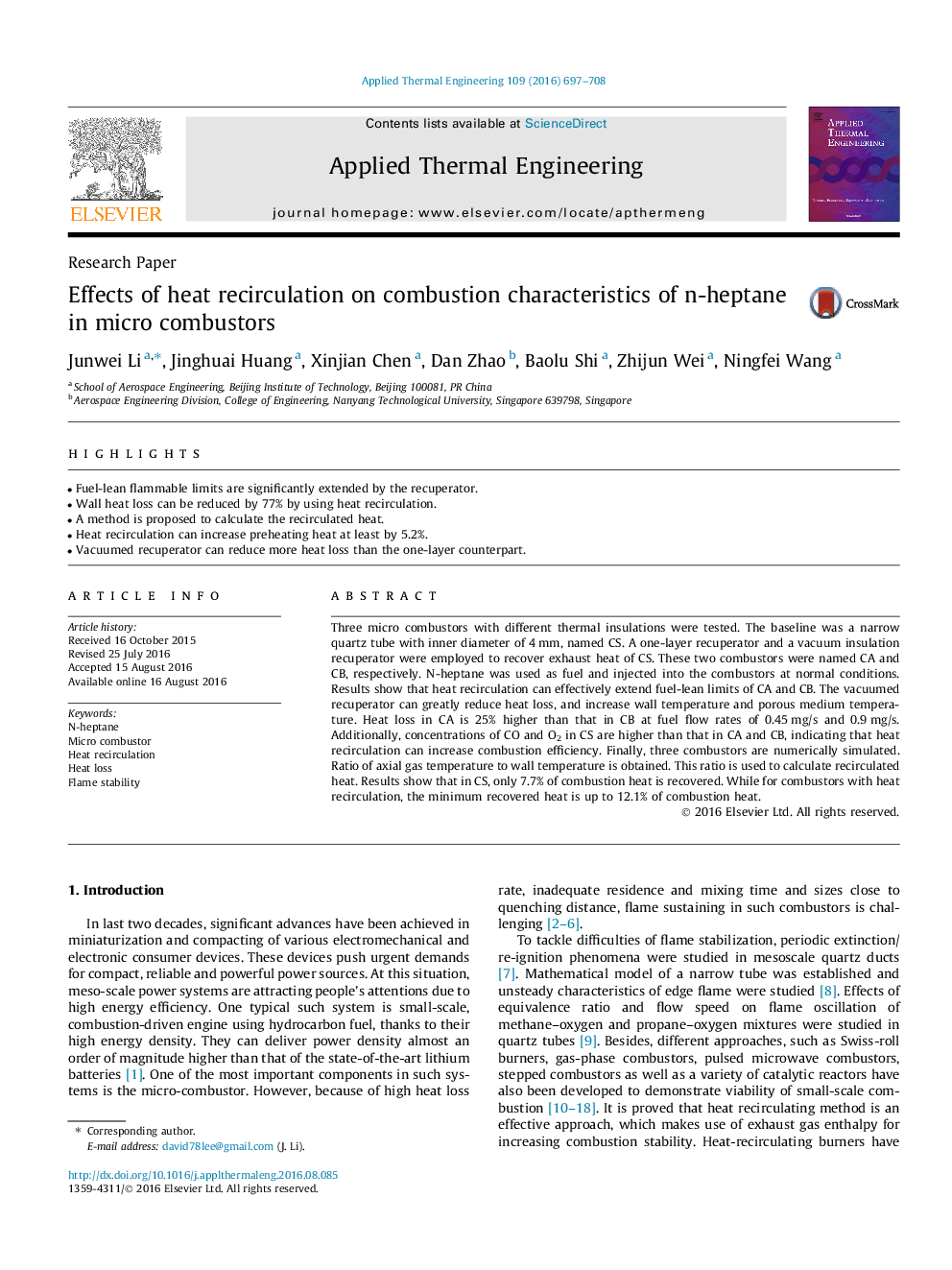| Article ID | Journal | Published Year | Pages | File Type |
|---|---|---|---|---|
| 6481196 | Applied Thermal Engineering | 2016 | 12 Pages |
â¢Fuel-lean flammable limits are significantly extended by the recuperator.â¢Wall heat loss can be reduced by 77% by using heat recirculation.â¢A method is proposed to calculate the recirculated heat.â¢Heat recirculation can increase preheating heat at least by 5.2%.â¢Vacuumed recuperator can reduce more heat loss than the one-layer counterpart.
Three micro combustors with different thermal insulations were tested. The baseline was a narrow quartz tube with inner diameter of 4Â mm, named CS. A one-layer recuperator and a vacuum insulation recuperator were employed to recover exhaust heat of CS. These two combustors were named CA and CB, respectively. N-heptane was used as fuel and injected into the combustors at normal conditions. Results show that heat recirculation can effectively extend fuel-lean limits of CA and CB. The vacuumed recuperator can greatly reduce heat loss, and increase wall temperature and porous medium temperature. Heat loss in CA is 25% higher than that in CB at fuel flow rates of 0.45Â mg/s and 0.9Â mg/s. Additionally, concentrations of CO and O2 in CS are higher than that in CA and CB, indicating that heat recirculation can increase combustion efficiency. Finally, three combustors are numerically simulated. Ratio of axial gas temperature to wall temperature is obtained. This ratio is used to calculate recirculated heat. Results show that in CS, only 7.7% of combustion heat is recovered. While for combustors with heat recirculation, the minimum recovered heat is up to 12.1% of combustion heat.
